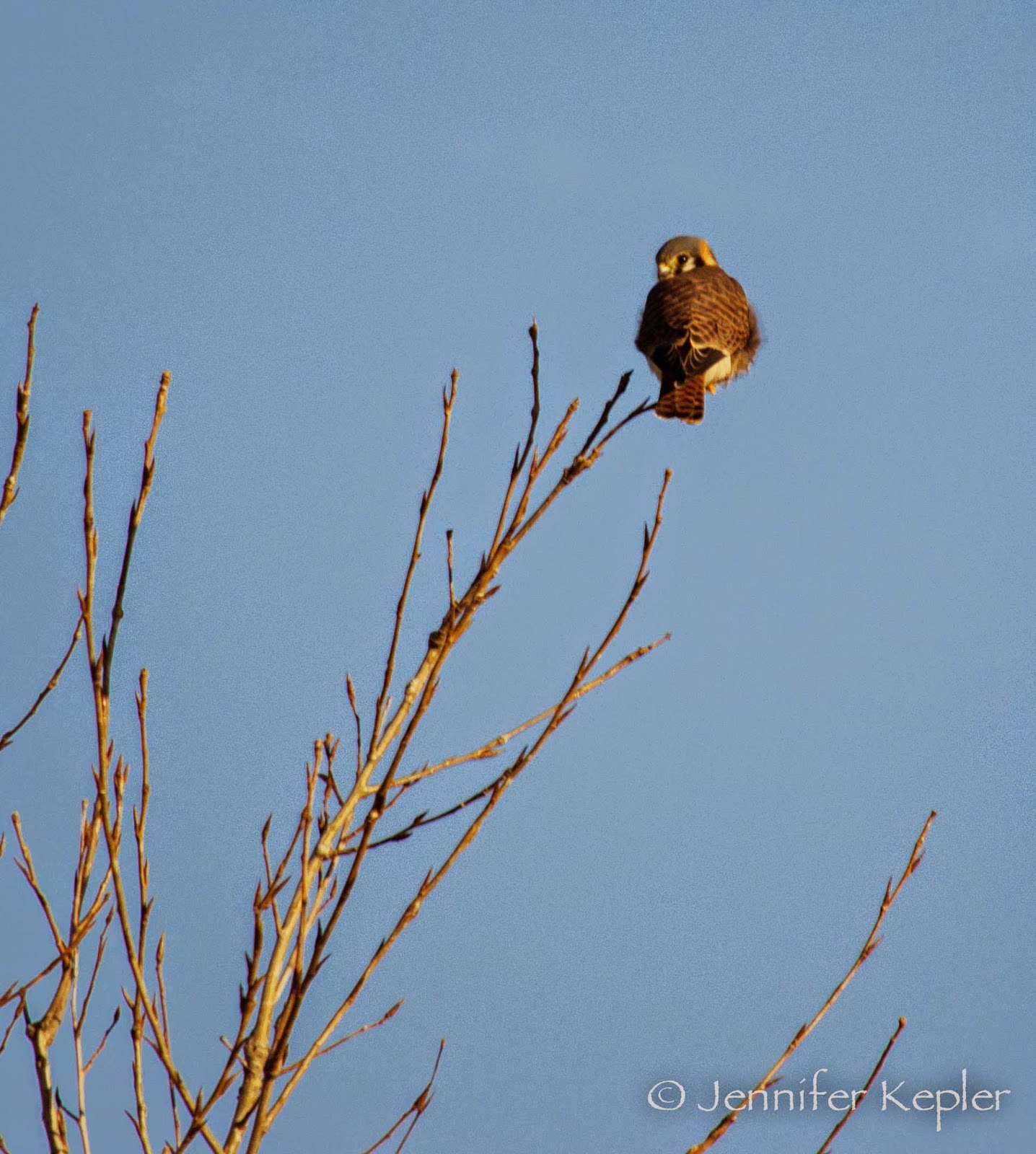This annual event began as a sport hunt, people would get onto sides, or teams, and whichever could bag the most birds won! Soon it turned into a count, especially as people became more and more into conserving birds instead of just shooting them out of the sky in large numbers. This count has been going on for 114 years, and this 115th year was my first year participating (I know, seriously).
I joined one of the Prospect Park teams and we birded mainly the north and north east portions of the park. We began at 7am and continued till approximately 3:30, with lunch at Prospect Park Zoo and a quick break for hot cocoa near the 15th street circle. Otherwise it was a cold, grey day, all day, with some flurries, the high today was 37, so yeah, lots of layers were required!
Despite the cold and slow morning, I had a really great time with a nice pick-up of good birds in the afternoon, including a rare, lingering clay-colored sparrow to add to my life list.
I didn't take too many pictures, except when we were within close range, found a rarity, and/or the opportunity arose, so here are just a few snip-its of the day, enjoy!
 |
| A female American Wigeon on the waterfowl pond at Prospect Park Zoo, reported on the Lullwater in the Park earlier this week, we were able to locate her in the zoo! |
 |
| The males are super beautiful and flashy, but despite her more camouflaged approach, her blue bill and mottled head set her apart from the mallards on the pond, she was also much smaller in size, but still easy to loose amounts the 100 or more wild freeloading mallards at the zoo. |
 |
| Also important to make sure you find all the American black ducks that can easily get lost within a crowd of mallards, as they look very similar to them. The black ducks have a darker body that is well defined from the lighter brown head, complete with a yellow bill, the female mallards have orange bills, then you just have to make sure they are not immature male mallards. |
 |
| A mourning dove at the feeder station. |
 |
| Cardinals added a nice flash of color to the grey day. |
 |
| Got a sweet little red-breasted nuthatch at the feeders, smaller than the white-breasted, with a redder breast, and a black stripe through the eye. |
 |
| And now some blurry photos of the clay-colored sparrow! He was far, yet close, but I didn't want to scare him, being with a crowd of observers. |
 |
| Can see some nice field marks on him, white mustache, black dot, lots of grey and buffy (clay) color. |
Just as interesting as the walk was the post-count pot-luck dinner held at the Boat House in Prospect Park. The data compiled is impressive and really allows you to see trends over the years in bird numbers. It was a really interesting and fun to see what species were all over different parts of Brooklyn. The most impressive was Spring Creek, with the largest species count of the day. Spring Creek evokes a memory of being a kid driving to Brooklyn with my mom, and it stunk, because it used to be a landfill, and every time we passed it we'd yell out "PEE-EWW!" Now its a grassland, full of songbirds, and even a short-eared owl! We had 123 species for all of Brooklyn, it was pretty awesome!
























































